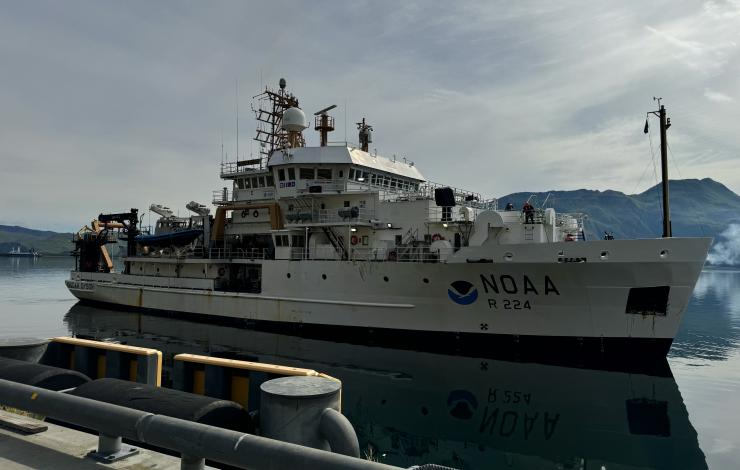PMEL's Ocean Molecular Ecology (OME) program uses 'Omics tools to tackle global ocean issues. We help lead the implementation of the NOAA 'Omics strategy and the National Aquatic eDNA Strategy to advance NOAA's mission of science and stewardship. We seek to leverage advances in molecular biology to scale biological analyses with physical and chemical processes. Our science aims to characterize the impacts of warming, ocean acidification, and hypoxia on marine life. This allows for characterization of marine ecosystems as they respond to a changing climate.
OME work directly supports NOAA's core missions in numerous ways
- Understand and predict Earth systems by characterizing climate impacts on marine biodiversity.
- Develop technology to improve NOAA science, service, and stewardship by advancing 'Omics approaches.
- Transition results so they are useful to society - we do this by creating open access data dissemination, bioinformatic software, and genetic resources.
- Provide stewardship and maintain sustainability of the Nation's living marine resources, their habitats, interactions, and ecosystems by generating critical biodiversity information that is foundational for climate resilient ecosystem based fisheries management.
NOAA 'Omics Website
PMEL Ocean Molecular Ecology Technical Portal
NOAA 'Omics Technical Portal
What's Happening
My name is Ryan Moinazad, and this summer I had the incredible opportunity to join NOAA’s Ocean Molecular Ecology group as an undergraduate research volunteer. I’m a rising sophomore at the University of Southern California, double majoring in Biological Sciences and Legal Studies, and I also assist with research at the Natural History Museum of Los Angeles County (NHMLAC). My summer project, a continuation of my work at NHMLAC, focused on a long-standing challenge in science: how to get usable DNA out of specimens preserved in formalin.
Formalin, a diluted form of formaldehyde, has been widely used for specimen preservation because of how well it preserves their shape and form. Museum collections across the world have historically used formalin to preserve samples. The tradeoff is that while formalin preserves the... more
Feature Publication
From the Arctic to the equator, large research vessels serve as mobile laboratories for understanding our oceans. These vessels are foundational to long-term marine ecosystem dynamics and crucial for achieving ocean sustainability across a wide range of disciplines, from fisheries and oceanography to marine biology, climate science, and environmental policy.
A recent review co-authored by PMEL scientists Zack Gold and Andrea Fassbender highlighted the critical role these vessels play in ocean research. PMEL utilizes large research vessels for diverse scientific objectives, including major interdisciplinary cruises such as EcoFOCI, Go-SHIP, and Ocean Acidification expeditions. They are also vital for... more










